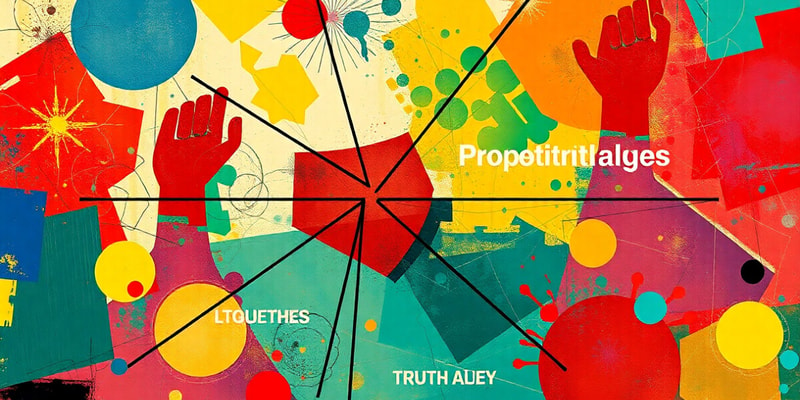Podcast Beta
Questions and Answers
What is the primary purpose of using short-circuit evaluation in Java?
What is the result of using the '&' operator in the expression 'if (a != 0 & b / a > 5)' when 'a' is 0?
Which of the following best describes the difference between the operators '&' and '&&'?
What does the third truth value represented by ⊥ signify in three-valued logic?
Signup and view all the answers
Why is it recommended to use the '&' operator primarily for bit patterns?
Signup and view all the answers
How can the evaluation order of conditions affect the results in Java's short-circuit operations?
Signup and view all the answers
When using the double pipe '||' in Java, what is the advantage over a single pipe '|'?
Signup and view all the answers
What happens if a variable used in an operation with '&' is not defined?
Signup and view all the answers
In the context of three-valued logic, how is the truth value of a combination defined?
Signup and view all the answers
What is a potential drawback of using the '&' operator for logical conjunction?
Signup and view all the answers
What does an interpretation assign to each propositional variable?
Signup and view all the answers
Which of the following best describes a tautology?
Signup and view all the answers
When is a propositional formula considered satisfiable?
Signup and view all the answers
What is implied if the negation of a formula is non-satisfiable?
Signup and view all the answers
What does the symbol ⊨ denote in propositional logic?
Signup and view all the answers
In propositional logic, how is a falsifiable formula defined?
Signup and view all the answers
How does an interpretation relate propositional variables to real-world statements?
Signup and view all the answers
What is the definition of a non-satisfiable formula?
Signup and view all the answers
Study Notes
Interpretation and Truth Values
- An interpretation assigns truth values (TRUE or FALSE) to propositional variables.
- Interpretations correspond to rows in a truth table.
- ⊨ 𝜑 denotes that the propositional formula 𝜑 is true under the interpretation 𝐼.
- ⊨ 𝜑 denotes that the propositional formula 𝜑 is true under all interpretations.
Propositional Formula Classifications
- A propositional formula is a tautology if it's true in every possible interpretation.
- A propositional formula is satisfiable if at least one interpretation makes it true.
- A propositional formula is falsifiable if at least one interpretation makes it false.
- A propositional formula is non-satisfiable (or false) if it's false under every possible interpretation.
Three-Valued Logic
- Three-valued logic extends the concept of truth values to include a third value: "undefined" or "unknown".
- This third value, often denoted by ⊥, introduces different ways to define Boolean operators (conjunction, disjunction, etc.).
- Java incorporates two types of conjunction:
- & (bitwise conjunction): Evaluates both sides, even if the first is false, leading to potential runtime errors if the second side raises an exception.
- && (short-circuit conjunction): Evaluates the second side only if the first side is true, which can be safer and more efficient.
- Similar logic exists for disjunction with | and ||.
- Short-circuit evaluation makes conjunction and disjunction no longer commutative in three-valued logic, meaning changing the order of variables can alter the result.
Studying That Suits You
Use AI to generate personalized quizzes and flashcards to suit your learning preferences.
Description
This quiz covers the essential concepts and classifications of propositional formulas, including interpretations, tautologies, satisfiability, and three-valued logic. Test your understanding of how truth values are assigned and the implications of different logical statements.




